If you want to build a bigger and stronger bicep, you should add spider curls to your arm workout routine.
Spider curls are a bicep isolation exercise performed on an incline bench. The easiest way to do them is with dumbbells, and you can also use other equipment such as an EZ-Bar or barbells.
The spider curl is one of the most effective bicep curl variations that mainly targets the short head of the biceps.
In this exercise, your chest is against a bench that prevents you from cheating or using other muscles, like your back and shoulders.
There are different ways to do a spider curl to build a bigger and stronger bicep.
- Barbell spider curl: Allows heavier load but less range of motion. Challenges stability.
- EZ bar spider curl: This exercise helps reduce stress on the wrists, making it a good option for people with wrist pain.
- Dumbbell spider curl: Allows greater range of motion. Each arm works independently.
- Reverse grip spider curl: Palms down to target brachioradialis.
- One-arm dumbbell spider curl: It is a great way to balance muscle and strength development.
- Spider hammer curl: The neutral grip is also effective to train forearm.
Want to take your gains to the next level? Discover your daily calorie needs with our free TDEE calculator
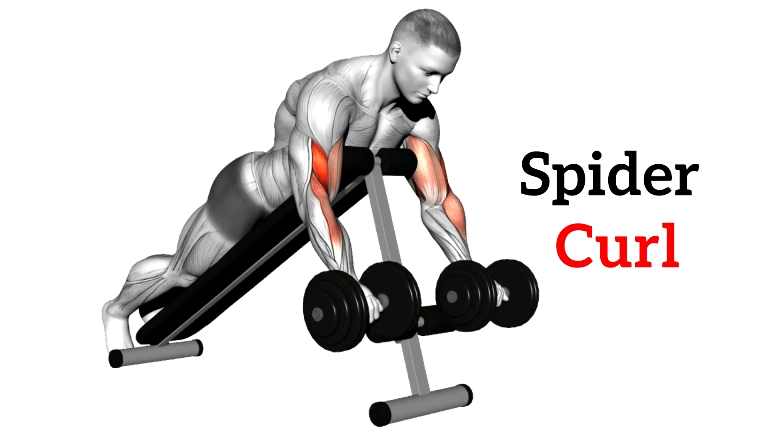
- Spider Curl Muscles Worked
- How To Do Spider Curl
- Spider Curl Form and Tips
- Spider Curl Variations and Modifications
- 1. Dumbbell Spider Curl
- 2. Barbell Spider Curl
- 3. EZ Bar Spider Curl
- 4. Dumbbell Reverse Spider Curl
- 5. Single Dumbbell Spider Curl
- 6. One Arm Dumbbell Spider Curl
- 7. Spider Dumbbell Hammer Curl
- How to Do Spider Curls To Build Bigger Biceps
- Spider Curl Workout Routines
- 1. Bicep-Focused Workout Routine
- 2. Pull Workout Routine
- 3. Full Body Workout Routine
- What Are The Benefits Of Spider Curls?
- FAQs
- What are spider curls good for?
- Are spider curls better than regular curls?
- Which head spider curls target?
- Why are spider curls so hard?
- Takeaway
Spider Curl Muscles Worked
- The spider curl primarily targets the biceps muscles, specifically the short-head biceps.
- In addition to its target, the bicep, the spider curl involves several synergist muscles, including the brachialis and brachioradialis.
- Some other muscles worked or played stabilizer muscles, including your Wrist flexors, Obliques, and Rectus abdominis.
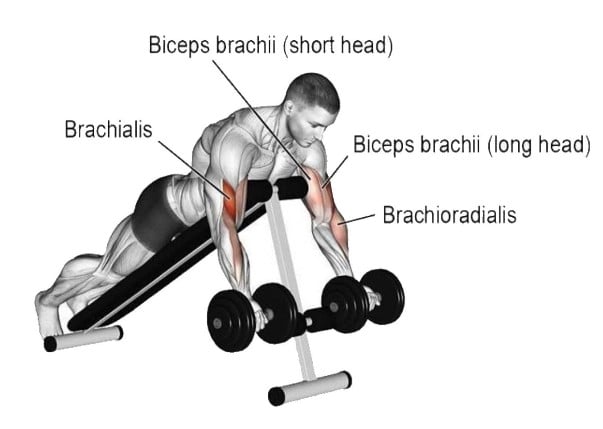
Your biceps brachii has two heads: short (inner) and long (outer).
The long head constitutes most of the biceps peak, while the short head sits on the inner side, adding thickness.
- Using a regular grip during curl will place approximately equal emphasis on both heads.
- Curling with your elbows back behind you will emphasize the long head and build the peak of your biceps.
- Curling with your elbows in front of your body will emphasize the short head and give your biceps more width.
How To Do Spider Curl
- Adjust the bench to an incline angle between 30-45 degrees.
- Lie face down on the bench with your chest against the pad. Your feet should be firmly planted on the floor.
- Hold a weight (dumbbell or barbell) with a supinated grip (palms facing up).
- Keeping your upper arms stationary, exhale as you curl the bar up toward your shoulders.
- Once up at the top, squeeze your biceps hard and hold for a second or two.
- Then, slowly lower the weight back down to the starting position.
- Do 8–10 repetitions and 3–4 sets.
Spider Curl Form and Tips
It is difficult to cheat during the spider curl since you are working against gravity on the bench press. But it doesn’t mean you can’t make mistakes.
- Your body should remain fixed. Only your biceps should be used to move the weight.
- The ideal bench angle for spider curls is between 45 and 60 degrees.
- Don’t underestimate the pause at the top of your curl, and take a moment to squeeze your bicep when you get there.
- A slow, controlled descent will increase time under tension, leading to more effective sets and less risk of injury.
- Ensure that your elbows are kept close to your sides, your knees slightly bent, and your hands gripped tightly to the bar.
- Always select a weight that gives you full-body control throughout the movement.
- Incorporate proper warm-ups, rest, and nutrition into your exercise program.
- Rest for 24 to 48 hours before training the same muscle groups to allow sufficient recovery.
- Here are some general guidelines for the spider curl exercise, including sets, reps, and frequency, to enhance muscle mass.
| Level | Sets | Reps | Frequency |
|---|---|---|---|
| Beginner | 2-3 | 8-12 | 1-2 times per week |
| Intermediate | 3-4 | 8-12 | 2-3 times per week |
| Advanced | 4-5 | 8-15 | 2-3 times per week |
Spider Curl Variations and Modifications
You can perform spider curls differently depending on your gym equipment and preferences. Here’s the deal:
- If you’re new to doing spider curls, start with a simpler exercise. One way to do this is to adjust the incline of the bench to a lower angle, maybe around 30 degrees instead of 45. This gives you a bit more stability. Another option is using lighter weights.
- For more advanced variations, try One-arm spider curls, reverse spider Curls, or stability ball spider curls. You can increase the weight to make spider curls more challenging.
1. Dumbbell Spider Curl
Dumbbell Spider curls are a remarkable exercise for building the biceps because they produce an intense muscle contraction on every single rep. It switches things up and keeps your biceps guessing with new stress.
If you have one arm that’s weaker than the other, the dumbbell spider curl could be a better choice. This allows you to strengthen the weaker arm and create symmetry.
Once you’ve mastered the dumbbell spider curl, consider using a different kind of free weight, like a barbell or an EZ bar with angled grips. With practice, spider curls can be a useful biceps workout to add to your arm workout routine.

How To Do
- Adjust the bench to an incline and level to a 30-45 degree angle.
- Grab two moderately light dumbbells in each arm.
- Lie on the bench in a reverse position with your chest pressed onto the backrest. Let your arms hang in front of your torso.
- Curl the dumbbells toward your shoulders and squeeze your biceps forcefully.
- Hold the contraction briefly, then slowly lower the weights until your elbows are fully extended.
2. Barbell Spider Curl
The barbell spider curl lets you lift heavier weights than you could with dumbbells, which helps you build bigger arms. Barbells require a stronger grip than dumbbells, which will further improve your grip strength.
Barbell spider curls train your biceps in a shortened (that is, maximally contracted) muscle position. This results in a powerful muscle pump that leads to significant hypertrophy.
Note: The barbell can be harder on your wrists than dumbbells, which can be a problem for people with wrist pain.
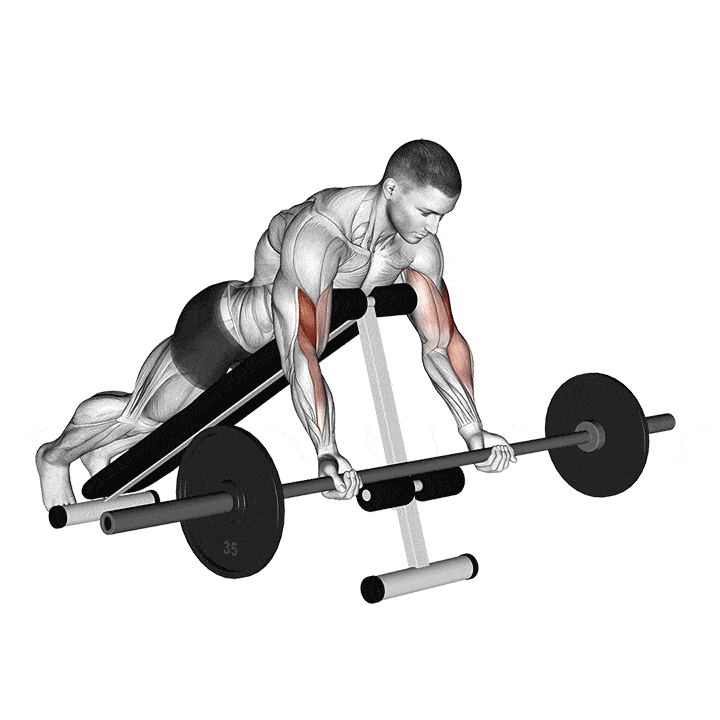
How To Do
- Lean against the incline bench so that your chest is supported.
- Stand on the balls of your feet and keep them about shoulder width apart for stability.
- Let your arms hang in front of your torso. From here, prepare a barbell or set it up in front of you.
- Slowly curl the barbell toward your shoulders and squeeze your biceps forcefully.
- Then, slowly lower the bar until your elbows are fully extended.
3. EZ Bar Spider Curl
The EZ bar’s angled grip puts less stress on the wrists than a straight barbell, reducing the risk of discomfort or strain. The grip also allows different hand positions (wide, narrow, reverse) to shift emphasis to different parts of the biceps.
The incline angle and the supported chest help to isolate the biceps and limit the involvement of the shoulder muscles.
This curl variation is usually performed for moderate to high reps, such as 8–12 reps per set or more.

How To Do
- Adjust the bench to an angle of 30–45 degrees.
- Lean against the bench so that your chest is supported.
- Ensure your feet (especially the toes) are well positioned on the floor.
- Use your arms to grab the EZ bar with a supinated grip (palms facing up) about shoulder width apart or slightly closer to others.
- Let your arms hang in front of your torso. From here, you can have an EZ ready or set it up in front of you.
- Slowly curl the EZ bar toward your shoulders and squeeze your biceps forcefully. Squeeze.
- Slowly begin to bring the barbell back to the starting position.
4. Dumbbell Reverse Spider Curl
Dumbbell Reverse spider curl is a variation of the spider curl in which the dumbbell is gripped palm-down. The motion is the same, but the change in grip allows specific arm muscles to be targeted.
The reverse grip places a significant emphasis on the brachioradialis muscle. Strengthening this muscle improves forearm strength and stability, which in turn improves grip strength and pulling movements.
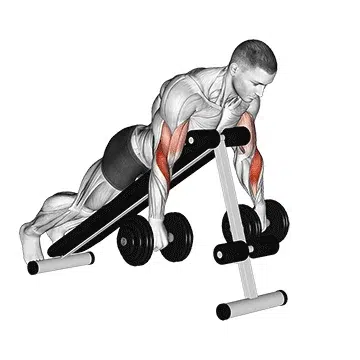
5. Single Dumbbell Spider Curl
Because you’re lifting a single dumbbell with both hands, you can lift heavier, which is great for building bigger biceps.
When you do the spider curl, you strengthen your upper arm and learn how to use your arm muscles correctly, while also strengthening your core muscles.
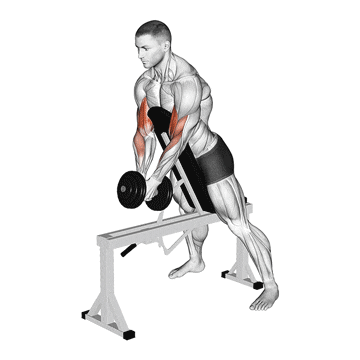
6. One Arm Dumbbell Spider Curl
We all have a dominant side, and this exercise helps identify and correct any imbalances. Working one arm at a time ensures both sides get equal attention.
When you arm train one arm at a time, you can focus on contracting the muscle and getting a deep, intense pump. I highly recommend trying the single dumbbell spider curl.
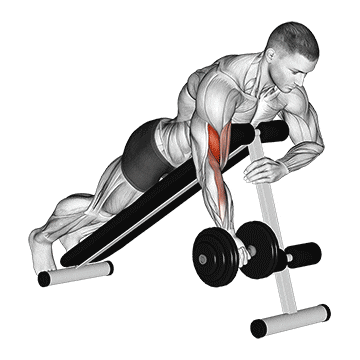
7. Spider Dumbbell Hammer Curl
If you love hammer curls, then the neutral grip dumbbell spider curl may be your variation.
We’ve discussed several spider curl variations that focus on the biceps or isolate the brachialis and brachioradialis.
However, the neutral grip variation forces all three muscles to work simultaneously, so this exercise can provide a little extra boost.
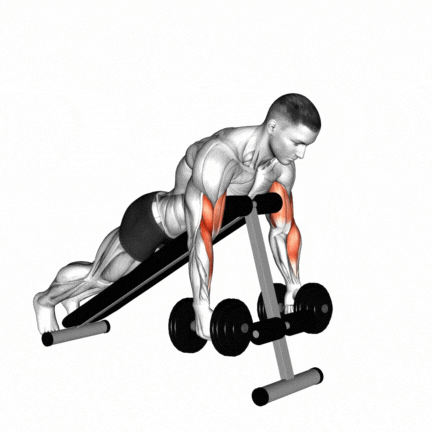
How to Do Spider Curls To Build Bigger Biceps
Spider Curl Workout Routines
The barbell curls can be incorporated into your workout routine in various ways. Here are some options:
- As a standalone exercise: Do on 3-4 sets of 8-12 reps.
- As part of a bicep workout: Do 3-4 sets of 8-12 reps along with other bicep exercises like the dumbbell bicep curl and hammer curl.
- As part of a full-body workout: Do 3-4 sets of 8-12 reps along with other compound exercises like squats, deadlifts, and bench presses.
1. Bicep-Focused Workout Routine
| Exercise | Sets | Reps |
|---|---|---|
| Barbell Curl | 3-4 | 8-12 |
| Hammer Curl | 3 | 10-12 |
| Preacher Curl | 3 | 8-10 |
| Concentration Curl | 4 | 8-12 |
| Spider Curl | 3 | 8-12 |
2. Pull Workout Routine
| Exercise | Sets | Reps |
|---|---|---|
| Pull-Ups | 3 | 8-10 |
| Plank | 3 | 8-12 |
| Lat Pulldowns | 3 | 10-12 |
| Dumbbell Spider Curl | 3 | 8-12 |
| Dumbbell Shrugs | 3 | 8-12 |
3. Full Body Workout Routine
| Exercise | Sets | Reps |
|---|---|---|
| Squats | 3-4 | 8-10 |
| Bench Press | 4 | 6-8 |
| Deadlifts | 3 | 8-12 |
| Spider Curl | 3 | 8-10 |
| Overhead Press | 4 | 8-10 |
| Lunges | 3 | 8-12 |
| Plank | 3 | 30 sec |
What Are The Benefits Of Spider Curls?
Besides the obvious advantage of thicker-looking biceps, Spider curls are a great way to increase general upper-body strength. This makes them a brilliant choice of exercise for training for other weightlifting exercises.
The following are some benefits of the spider curl exercise:
- Lifters who do the same exercises repeatedly will reach a plateau and cannot seem to get their biceps any bigger. If this describes you, then spider curl may provide greater results.
- As you perform the exercise with dumbbells, you correct whatever strength imbalances you may have in one bicep against the other.
- The main advantage of executing incline-prone curls is having your arms stretched. This causes more metabolic stress, leading to an increase in the size of the biceps.
- It provides a broader range of motion, thus increasing movement efficiency, injury avoidance, and the possibility of strength and size growth.
- While there is a lot of emphasis on building the bicep peak through workouts focusing on the long head, using exercises that exercise the short head like the spider curl will give the arm a more symmetrical look.
- They provide a broader range of motion, thus increasing movement efficiency.
- The Spider Curls add freshness to your bicep workout, helping to fill up the biceps and increase muscular growth.
FAQs
What are spider curls good for?
Spider curls primarily target the short head of the biceps brachii. However, they also target your forearm flexors, which are crucial to completing this movement.
Are spider curls better than regular curls?
Spider curls are an excellent variation on the traditional bicep curl. They provide a full range of motion, which is vital to building more muscle and strength.
Which head spider curls target?
Spider curls primarily target the short head of the biceps brachii. To a lesser extent, they also target the long head of the biceps, brachialis, and forearm muscles.
Why are spider curls so hard?
Spider curls are a safe and challenging way to target your biceps. Since you are setting up with your chest supported on the incline bench, there is a very low chance of cheating.
Spider Curls are very difficult because of the downward pull of gravity and the dead hang and vertical position of both arms.
Takeaway
The spider curls are an excellent isolation bicep exercise. A simple grip modification brings the long head into play.
Spider curls are easy to incorporate into your existing workout routine using the equipment you likely already have in your gym.
If you include the spider curl in your arm day, save it for the end. Additionally, if your bicep muscles aren’t even, use dumbbells. On the other hand, if you already have arm symmetry, use the barbell.
References
- Barakat C, Barroso R, Alvarez M, Rauch J, Miller N, Bou-Sliman A, De Souza EO. The Effects of Varying Glenohumeral Joint Angle on Acute Volume Load, Muscle Activation, Swelling, and Echo-Intensity on the Biceps Brachii in Resistance-Trained Individuals. Sports (Basel). 2019 Sep 4;7(9):204. doi: 10.3390/sports7090204. PMID: 31487841; PMCID: PMC6783981.
- Biscarini A., Borio R., Coscia F., Mazzolai G., Simonetti S., Rosi G. (2005) Biomechanics of dumbbell/barbell and cable biceps curl exercises. Italian Journal of Sports Science 12, 83-93
- Kraemer & Ratamess (2004) Kraemer WJ, Ratamess NA. Fundamentals of resistance training: progression and exercise prescription. Medicine and Science in Sports and Exercise. 2004;36(4):674–688. doi: 10.1249/01.MSS.0000121945.36635.61.
- Differences in electromyographic activity of biceps brachii and brachioradialis while performing three variants of curl

Manish is a NASM-certified fitness and nutrition coach with over 10 years of experience in weight lifting and fat loss fitness coaching. He specializes in gym-based training and has a lot of knowledge about exercise, lifting technique, biomechanics, and more.
Through “Fit Life Regime,” he generously shares the insights he’s gained over a decade in the field. His goal is to equip others with the knowledge to start their own fitness journey.
